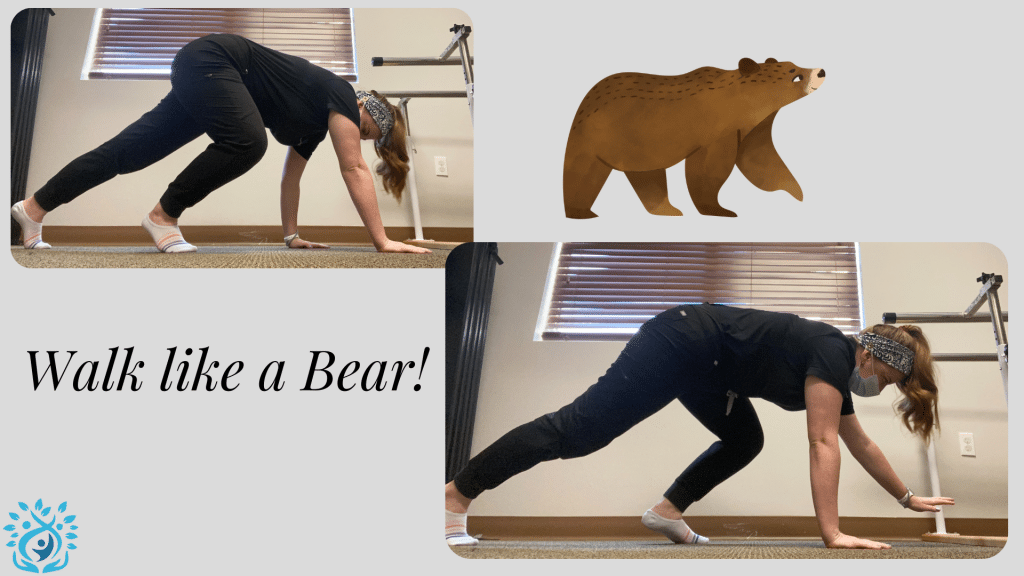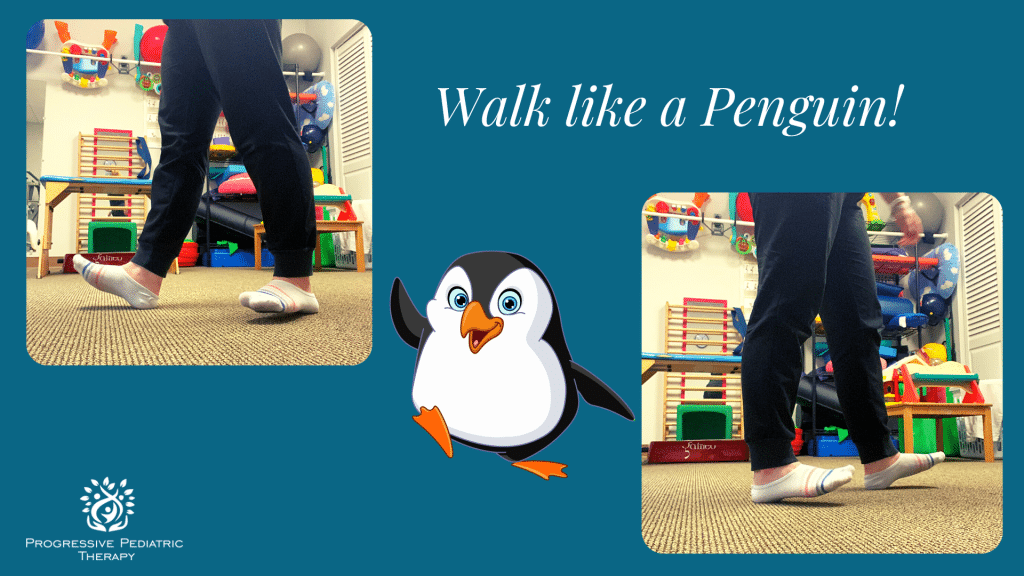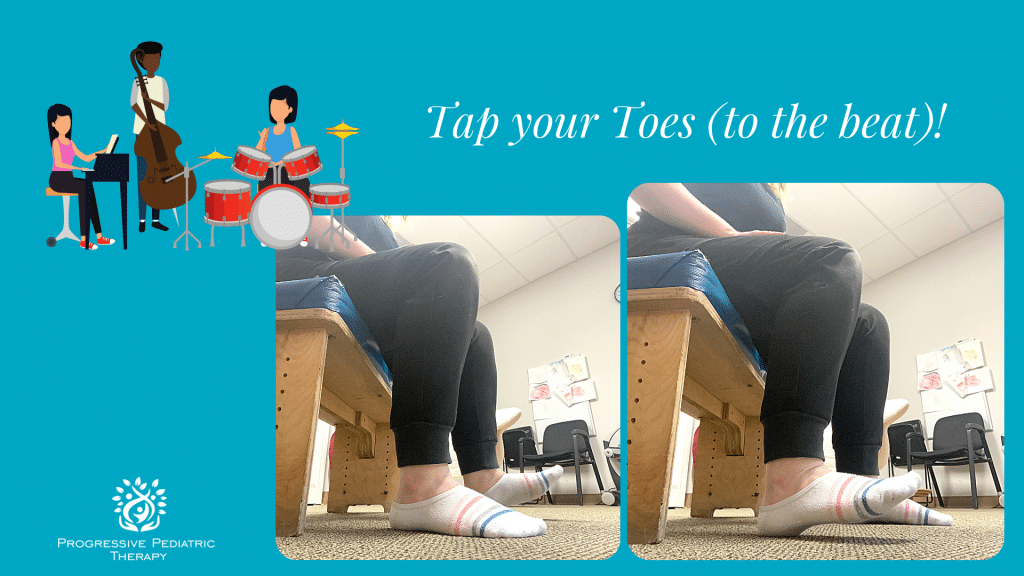Written By: Kaleigh Smyrk, PT, DPT
Children typically begin to walk around 12 months of age, and when they start, it is so exciting to see! You may notice that your child starts to walk with a wide base of support, some waddling, and little to no arm swing. Initially, kiddos may walk with flat feet or slightly up on their toes, but around 18-24 months of age, we begin to see a consistent heel strike when children walk. Sometimes, it is difficult for a child to begin walking with a heel-toe gait pattern, and they will continue to walk on their tip toes.
Reasons why children walk on their toes:
Sometimes, we do not know the exact reason why a child may begin toe walking. It can be due to tightness in the calf muscles, difficulty processing sensory information through their feet, or bony misalignment, to name a few reasons. Toe walking can also be associated with diagnoses such as autism spectrum disorder, cerebral palsy, and muscular dystrophy. Whatever the underlying cause, physical therapy is a great option to help assess and address a child’s toe walking.
Why we address it:
Usually, children outgrow this gait pattern by 24 months. However, if not addressed, toe walking leads to tightness in the calf muscles, which limits ankle range of motion, affecting their strength and balance. Additionally, toe walking increases stress put on the knee and hip joints. This can lead to pain, injury, and falls as the child grows and develops their motor skills. In severe cases, this gait pattern can lead to contractures in the calf muscles, which may someday require surgery to correct.
How a Physical Therapist can help:
- If you are concerned about your child’s gait pattern, you can make an appointment for a physical therapy evaluation. The physical therapist will look at his or her range of motion, strength, gait, and muscle tone. Once the PT decides that your child will benefit from physical therapy, we may work on stretching and strengthening exercises, as well as fun activities to help adjust their walking pattern. Some children may also benefit from orthotics to help them walk with a heel-first contact rather than on their tiptoes.
Along with physical therapy, doing the exercises your PT recommends at home will make all the difference for your child!
Here are a few ideas for activities you can do at home:
- Bear crawl
- Use your hands and feet to walk along the floor just like a bear! Make sure your knees don’t touch the ground. This helps stretch the calf muscles.

- Penguin walking (heel walking)
- With your toes pointed up, walk on your heels like a penguin. This will help strengthen the dorsiflexion muscles (the muscles that help point toes towards your nose) in the leg as well as increase sensory input through the heels.

- Toe taps
- While sitting in a chair, lift the front of your foot towards your nose to the beat of a song! Make sure heels stay on the ground. This will help strengthen the dorsiflexion muscles.



0 Comments